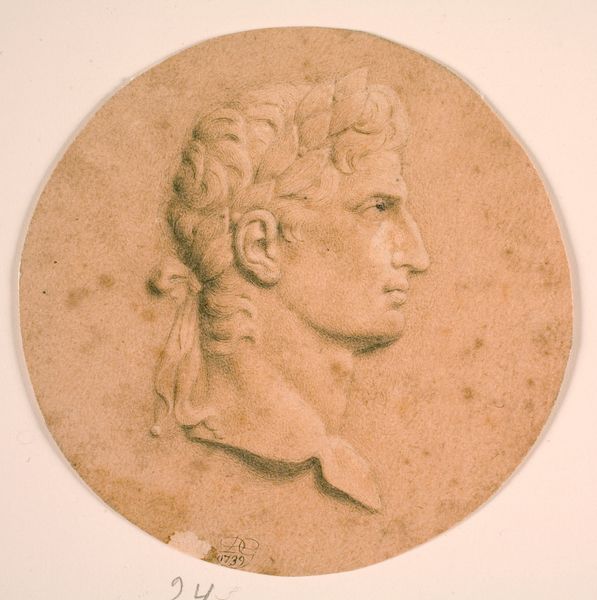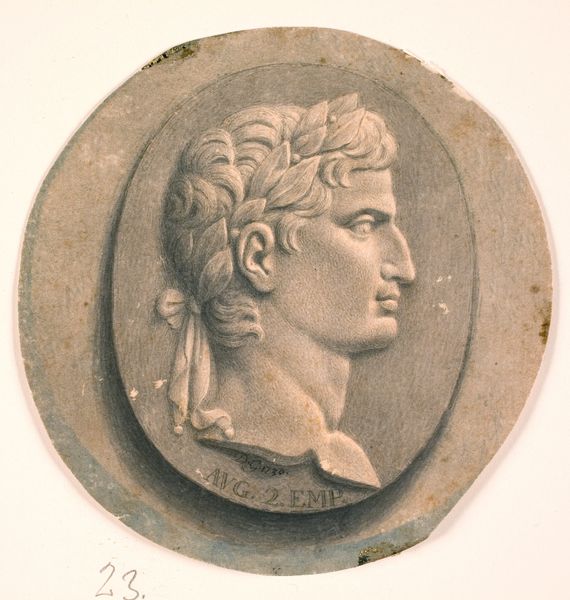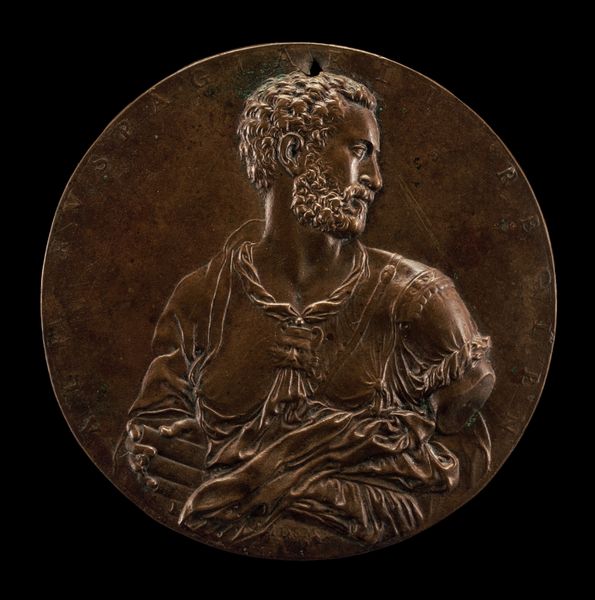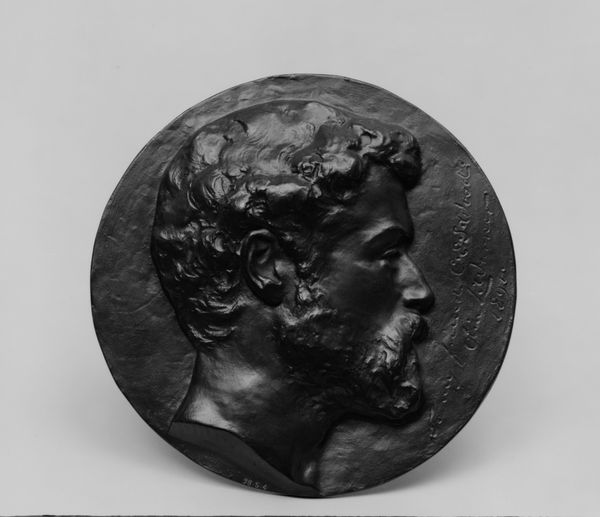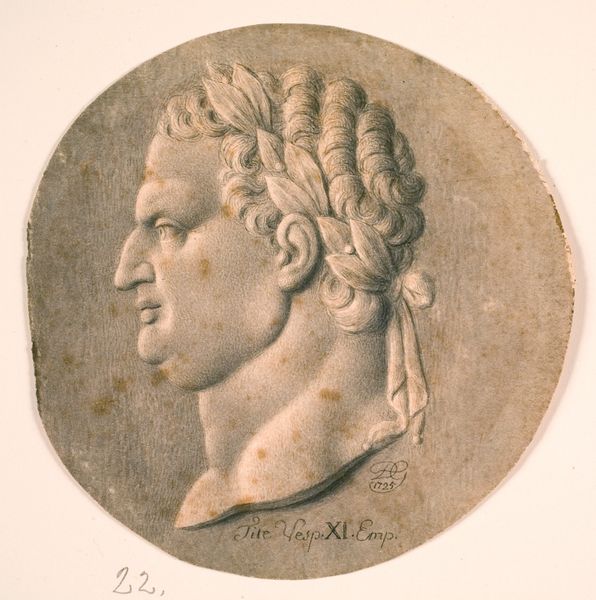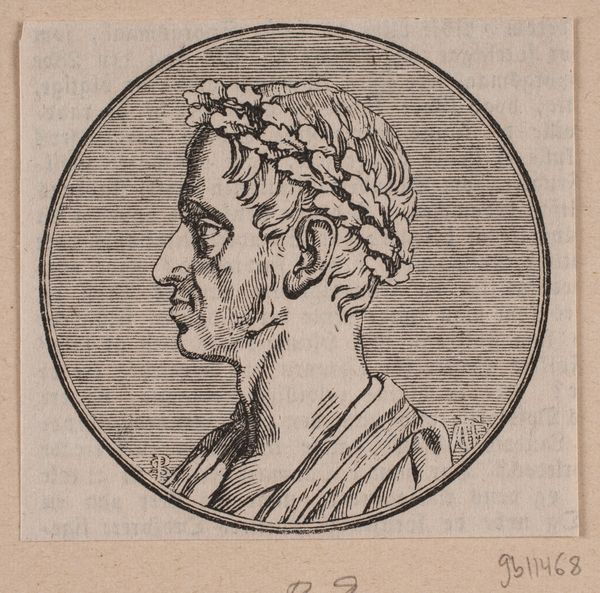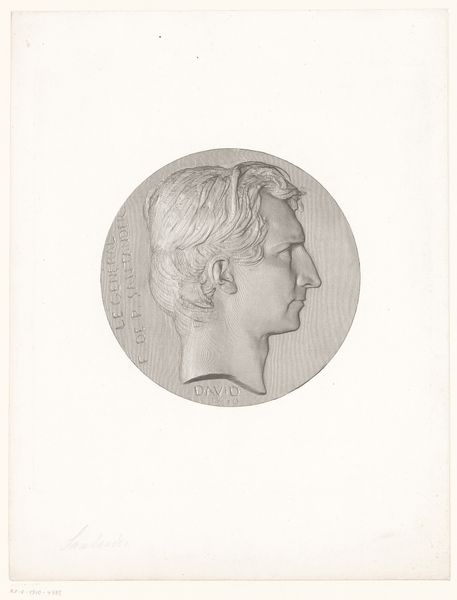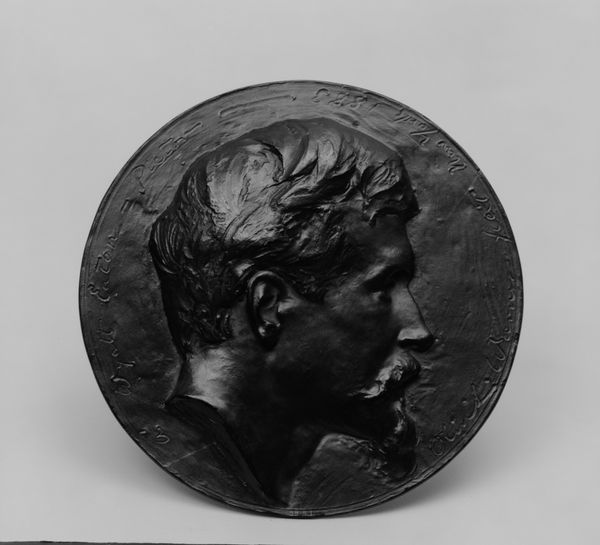
metal, sculpture
#
portrait
#
medal
#
self-portrait
#
metal
#
sculpture
#
sculpture
#
italian-renaissance
Dimensions: Diam. 7.8 cm, wt. 119.31 g.
Copyright: Public Domain
This self-portrait medal was created in Italy by Alfonso Ruspagiari in the mid-16th century. The very concept of a self-portrait medal in the Renaissance speaks to the changing status of the artist, from anonymous craftsman to celebrated individual. Italy in the 1500s was a land of competing city-states, and the arts were often used as a form of political and cultural capital. Ruspagiari's choice of the medal format evokes the tradition of classical antiquity, a strategy often used by Renaissance artists to align themselves with the prestige of the ancient world. The ability to cast one’s own image in metal implies not only technical skill, but also a certain level of financial independence and social standing. The inscription around the perimeter further underscores the artist's self-awareness and desire for recognition. As art historians, we can delve deeper by researching the specific cultural milieu in which Ruspagiari operated, examining patronage networks, and comparing his work with that of his contemporaries. What we can say for certain is that this medal is a testament to the artist's ambition and a reflection of the evolving role of the artist in Renaissance society.
Comments
No comments
Be the first to comment and join the conversation on the ultimate creative platform.
